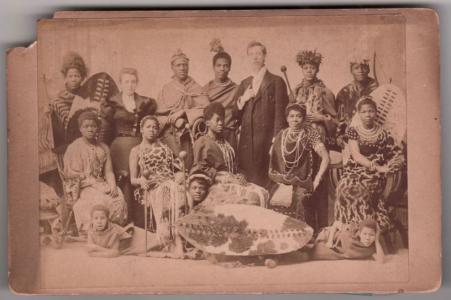Related Collections from the Archive
Related content
The contacts between black South Africans and the African American community in the United States played an important part in the development of the South African intelligentia.
They found in America currents of thought that they could learn from – including W. E. B Du Bois and Booker T. Washington.
There were important ties between churches and cultural links as well.
The South African choir’s tour, which began in Britain and continued to Canada and the USA was a case in point.
While in Britain they performed widely including for Queen Victoria. Some wonderful photographs of the choir have been recently unearthed. They are rare, early images of black South Africans.
A wider range of photographs can be found in the Getty Archive, with details of who they are.
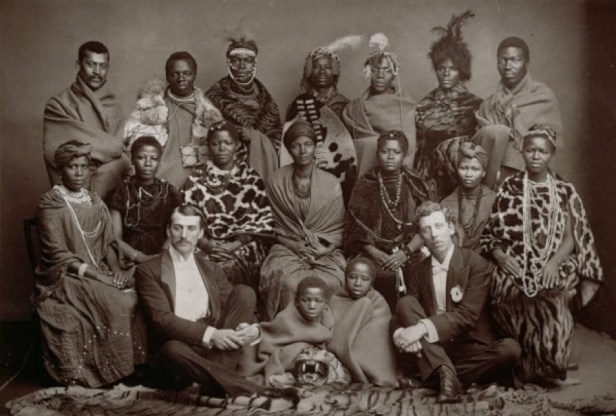 Members of the African choir pose for a group portrait with their English choir manager, Walter Letty and musical director, James Balmer. The choir, drawn from seven different African tribes, toured Britain from 1891 to 1893, to raise funds for a technical colleage in their home country. Their best known performance was before Queen Victoria, at Osborne House, the royal residence on the Isle of White in 1891. here Image source
Members of the African choir pose for a group portrait with their English choir manager, Walter Letty and musical director, James Balmer. The choir, drawn from seven different African tribes, toured Britain from 1891 to 1893, to raise funds for a technical colleage in their home country. Their best known performance was before Queen Victoria, at Osborne House, the royal residence on the Isle of White in 1891. here Image source
Others portrayed the South Africans in ‘traditional’ or ‘tribal’ dress, which was popular with British audiences.
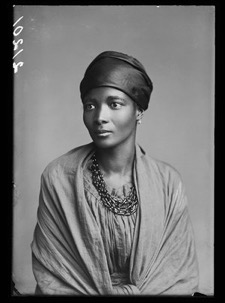 Mrs Eleanor Xiniwe (née Ndwanya) of the African Choir, 1891. Photographed by London Stereoscopic Company studios. Image source
Mrs Eleanor Xiniwe (née Ndwanya) of the African Choir, 1891. Photographed by London Stereoscopic Company studios. Image source
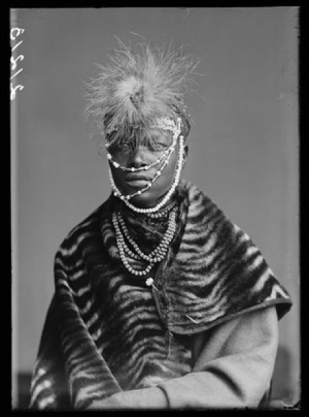 Johanna Jonkers Image source
Johanna Jonkers Image source
So what do we know about the tour?
This is what I have so far discovered.
Between 1891-1893 a group of young Africans singers toured Britain and North American as the ‘African Choir’. Inspired by Orpheus M. McAdoo’s Virginia Jubilee Singers, they were a Christian choir on a mission to raise funds for a technical school in Kimberley in the Cape Colony (South Africa). The trip was organised by James H. Balmer.
The Choir’s members included Paul Xiniwe and his wife Eleanor, Sannie Koopman, Charlotte Makhomo Manye, Johanna Jonkers, Josiah Semouse and a Miss Gwashu.
Charlotte Manye (first woman on the right) was 17 years old when the African Choir arrived in London. While on tour with the Choir in the US she was offered at scholarship at Wilberforce University, the African Methodist Episcopal Church university in Xenia, Ohio.
She became the first South African woman to earn a Doctorate in Arts and Humanities and she was betrothed to a fellow graduate, Dr. Marshall Maxeke.
Organisations that Dr Charlotte Manye Maxeke founded, including the the Bantu Women’s League and AME Church’s Widow’s Mite Society, were responsible for educating literally thousands of young Africans and campaigned for women’s rights in South Africa.
She was an early and very active member of the African National Congress, writing much of their early literature, and a passionate advocate for African liberty.
The American tour
After a most successful tour through Canada the company came into the United States. Here, in spite of the unusual depression, they were everywhere greeted with crowded houses.
People flocked to hear them.
The press was unanimous in agreeing that nothing, at once so unique, so interesting and amusing had ever been heard before.
For 25 weeks they crowded the largest auditoriums of Boston, earning everywhere the good will of the people. It was at this time that the photograph at the top of this story was taken.
There has been a good deal of research into the choir’s tour, and the hardships they faced, including a study by Jane Collins.
This is the information on the back of the photograph. I would welcome further information – especially about the American leg of the tour. Martin
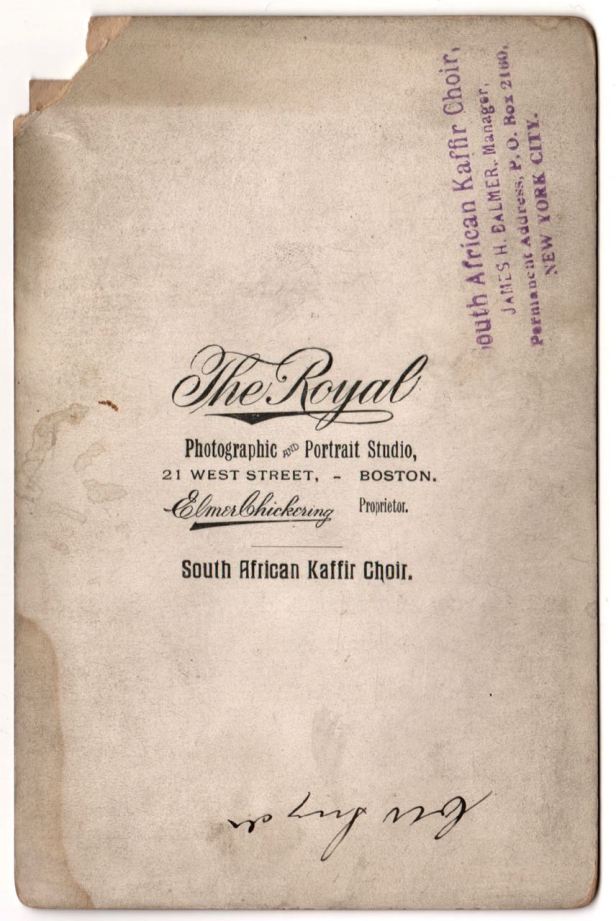 This is the information on the back of the photograph. Image source
This is the information on the back of the photograph. Image source
